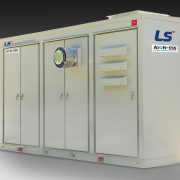SolarPower Europe forecasts 1.3 TW total installed global solar power generation capacity by 2023
The European solar energy association SolarPower Europe released its Global Market Outlook 2019-2023 report at leading solar trade event Intersolar Europe, which took place in Germany from 15 to 17 May 2019, showing that solar power reached important milestones in 2018, with an even more optimistic picture forecasted for the next five years.
Christian Westermeier, President of SolarPower Europe, said:
“2018 was a unique year for the entire global solar industry, as we exceeded the magic installation mark of 100 GW per year for the first time, which led the solar power sector to grow to over 500 GW or 0.5 TW. Last year, we again saw strong cost improvements with solar becoming the lowest-cost power generation source in more and more regions. At the same time, new applications have quickly progressed, such as floating solar, while corporate renewable Power Purchase Agreements have reached a double-digit GW-level, and a market for merchant solar has emerged in several countries.”
A total of 102.4 GW of solar power went on the grid around the world last year. That’s still 4% more than the 98.5 GW installed in 2017 and this is in comparison to two very high-growth years: 2017 and 2016, which had growth rates of around 30% and 50% respectively. The main reason for last year’s slower solar market growth was the contraction of the Chinese market, which, at 44.4 GW, shrunk by 16% compared to its record 52.8 GW in 2017. While other leading solar markets also shrank (India, Japan) or stagnated (US) for various reasons, many new and emerging as well as re-emerging markets more than compensated for this slower growth period of the tier 1 group.
In 2018, 11 countries installed more than 1 GW of solar; that’s two more compared to the nine GW-scale solar markets in 2017. SolarPower Europe’s Medium Scenario estimates that the number will significantly increase to 16 countries in 2019.
Europe as a whole added 11.3 GW in 2018, a 21% increase over the 9.3 GW installed the year before mainly because of the EU’s binding national 2020 targets. In 2019, SolarPower Europe’s Medium Scenario sees demand surge by over 80% to 20.4 GW, and an 18% growth to 24.1 GW in 2020, which would be a new installation record, surpassing the 22.5 GW Europe added in 2011.
Walburga Hemetsberger, CEO of SolarPower Europe commented:
“Global solar demand continued to grow last year, as new emerging markets have embraced solar’s attractive business case – a clean, versatile and low-cost power generation source. This market diversification means interest in solar is rising at a rapid pace.” Hemetsberger added: “In Europe, we have entered a new era of solar growth and with the recently concluded Clean Energy Package, we have a new framework for solar that will see our technology thrive even more in the coming years. We now look to EU member states to put ambitious solar targets in place and ensure robust implementation guidelines in their 2030 National Energy and Climate Plans (NECPs).”
On a global level, in its Medium Scenario, SolarPower Europe anticipates that around 128 GW of new PV capacity will be installed in 2019, which would translate into a 25% market growth. This will lead to a cumulative installed capacity of 645 GW, which is about 4% higher than assumed in last year’s Global Market Outlook. The solar TW-level will most likely be exceeded in 2022. The 5-year Global Market Outlook expects that global solar power generation capacities will add nearly 800 GW and reach a total solar power generation capacity of 1.3 TW in 2023.
Michael Schmela, Executive Advisor of SolarPower Europe, said:
“Solar is making significant strides and this is very good news for the energy transition. However, we need to quickly accelerate the deployment of solar power to meet the Paris agreement targets. Solar is ready in terms of both technology and affordability for a much greater uptake of our clean energy source to help mitigate the climate crisis.”
According to the International Renewable Energy Agency (IRENA) an average of over 400 GW of renewables have to be installed per year until 2050 to keep temperature rise below 2°C. In 2018, around 180 GW of renewable power capacity was installed.

Figure: World total solar PV market scenarios 2019-2023 © SolarPower Europe 2019.
Source: Press Release by SolarPower Europe.










